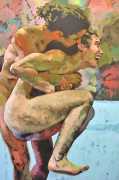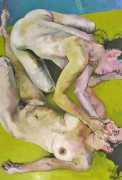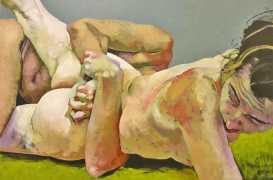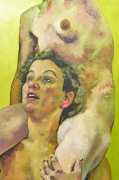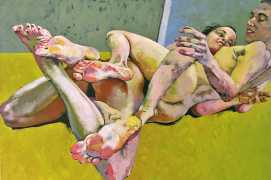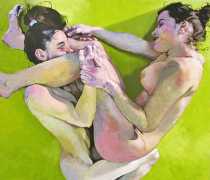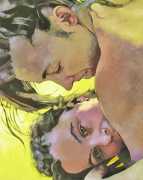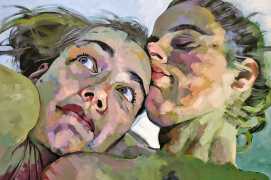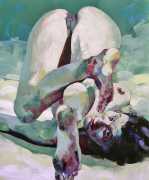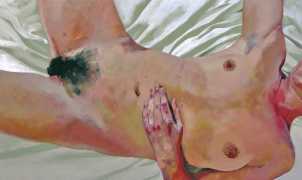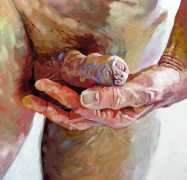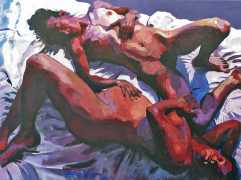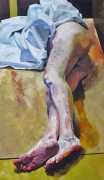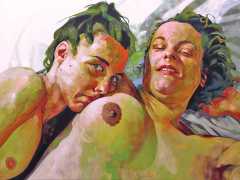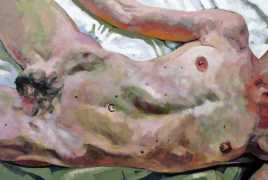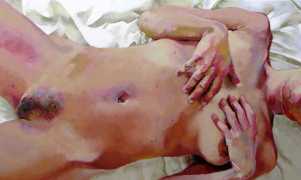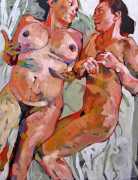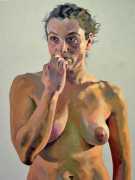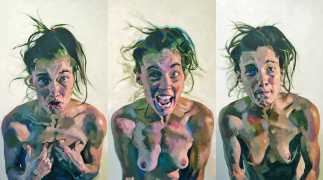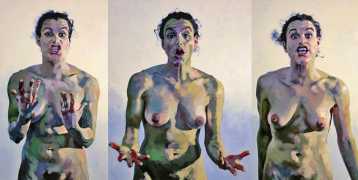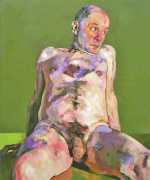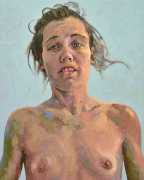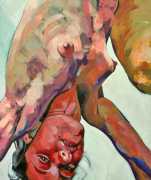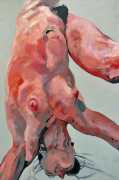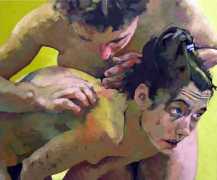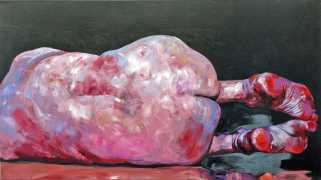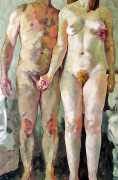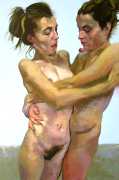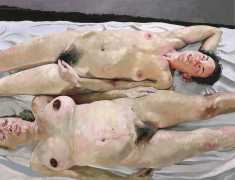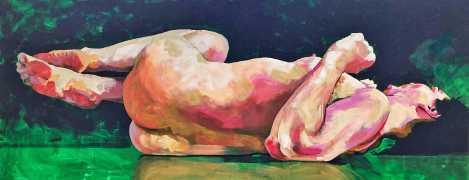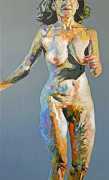In 2008 a series of Hanjo Schmidt’s paintings were included in an exhibition entitled ‘Gesichter’ (Faces) in Weil der Stadt, a town near Stuttgart. In the catalogue for the exhibition, the art critic Adrienne Braun wrote her thoughts about his work:
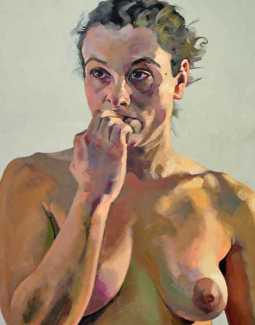 Hanjo Schmidt works mostly from photographs, but rather than attempting to create photorealistic paintings his aim is to express the movement of the person and the feelings she or he feels at the moment the photograph was taken.
Hanjo Schmidt works mostly from photographs, but rather than attempting to create photorealistic paintings his aim is to express the movement of the person and the feelings she or he feels at the moment the photograph was taken.
Schmidt paints in acrylic, and often uses a cheap brush applying paint in rather crude, fast strokes. His style is loud and dominant, the colours are based on what you he sees, but are often carried to an extreme. The surprising thing is that even with these crude, raw brushstrokes the model is defined in a perfectly precise way. Shining eyes, pupils with sharp contours, a sinewy neck or bony shoulder blades: everything is unambiguously defined, and yet this is a type of painting that does not attempt to create the illusion of a realistic rendition of the subject matter. The fact that we can always clearly recognise the subject, yet at the same time know we are actually looking at a painting, is a contradiction that is the real challenge in the works of Hanjo Schmidt.
What is more, Schmidt exaggerates expressively what he sees in contrast to the smoothing-out of commercial pictures with the help of Photoshop. He emphasises and underlines everything the cosmetic industry would try to hide. These faces are not normed or standardised, but belong to individuals. Thus his paintings are a departure from the smooth evenness of the beautiful façade, going to the core of the human essence.
Though the backgrounds may be subtle and soft, there is something pathetic and pitiful about these people. They seem to have been thrown into the world and somehow be at the mercy of themselves. You can sense the tragedy of not only having to bear the world but also themselves.
The bodies and faces in Hanjo Schmidt’s paintings represent the human being as it is – an ambivalent existence, beautiful and at the same time ugly, vulnerable and brusque, searching and denying, showing and hiding. Looking at his paintings is like looking in the mirror reflecting ourselves.


